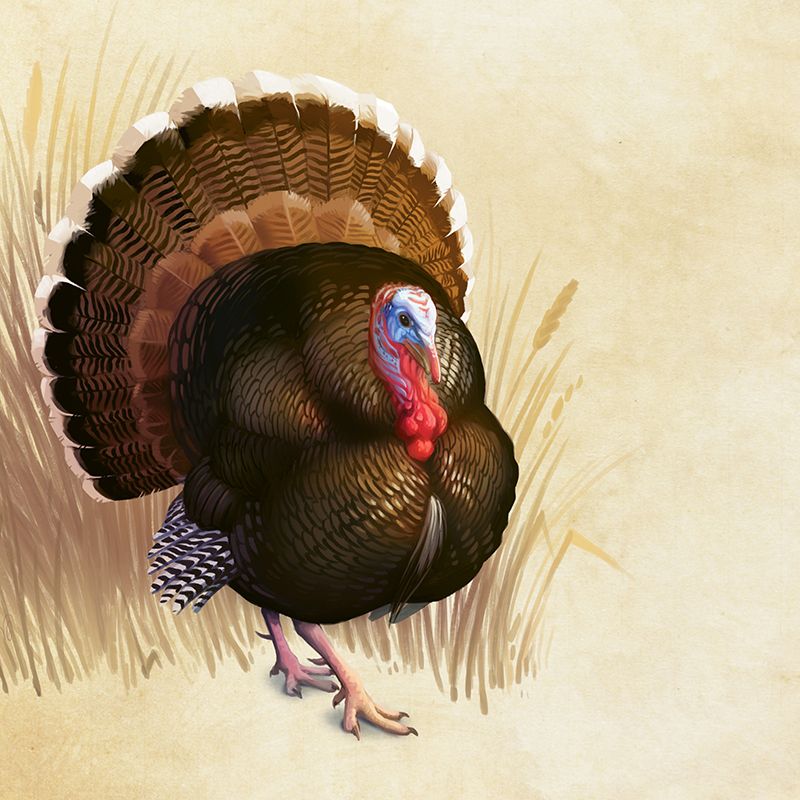The svelte, long-legged bird known as Meleagris gallopavo is quite a different beast than the fat and juicy turkey that graces our holiday tables. For starters, this animal can fly—for more than a mile, in fact—at speeds topping out around 55 mph, and he can run about half that fast. Here, learn more about the smart and social U.S. native that’s enjoyed quite the comeback over the last century

The better bird? In a letter to his daughter, Benjamin Franklin argued that the turkey may have been a more appropriate national symbol than the eagle, writing that it ”is in Comparison a much more respectable Bird, and withal a true original Native of America… He is besides, though a little vain & silly, a Bird of Courage, and would not hesitate to attack a Grenadier of the British Guards who should presume to invade his Farm Yard with a red Coat on.”
Who’s Who “Toms” (or “gobblers”) have dark, iridescent plumage, and their heads vary from reddish to grey-blue or white depending on the season. “Hens” are smaller—about 10 to 12 pounds—with duller plumage and a grayish head. Both males and females can have a “beard,” a tuft of feathers sticking out from the chest, although the hen’s beard is usually shorter.
Talking Turkey The birds communicate using up to 28 different vocalizations, including a high-pitched “kee kee,” clucks, purrs, yelps, and cackles. A male will attempt to attract a female by gobbling at a volume that can be heard more than a mile away. He also “struts,” with his tail fanned out, head thrown back, and wings lowered to drag on the ground.
Of a Feather These extremely social creatures congregate in flocks, also known as “rafters,” that can include as many as 300 individuals. They live on the ground and forage for acorns, nuts, seeds, leaves, insects, and amphibians.
Return of the Native Due to unregulated commercial hunting and loss of habitat, wild turkey numbers began to greatly diminish in the early 1900s. But thanks to stricter hunting guidelines and conservation efforts through states and nonprofits like the National Wild Turkey Federation—headquartered in Edgefield, South Carolina—populations have rebounded so well that all of the Palmetto State’s 46 counties have a month-long spring hunting season.
Taking Aim The turkey shoot dates back to the beginnings of the country, when live animals were used as targets. The sharpest shot not only proved his skill with a long rifle but won the fresh meat for dinner. Today, such contests are often fundraisers that challenge participants to aim at paper targets in hopes of scoring a bird of the domesticated and frozen variety.